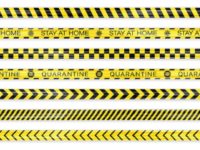Pharmacy and retail workers could be up to $4800 worse off a year from a double whammy of penalty rate cuts and a delayed minimum wage increase.
Penalty rates for workers in those industries are due to be cut by 15 per cent on this week, the final stage of more than three years of staged reductions.
On top of that the annual minimum wage rise of 1.75 per cent has been delayed until 1 February for pharmacy and retail workers.
Labor asked the Parliamentary Library to research the impact of the two Fair Work Commission decisions.
The minimum wage freeze will cost workers at least $400 at $13 a week for 31 weeks.
When the cuts to penalties are factored in, a full-time pharmacy assistant who works Sundays and public holidays could take a $4800 annual hit to earnings.
Had the pre-February 2017 rates been maintained, the employee could have earned $54,600 over the year compared to $49,800.
A full-time retail employee who works Sunday will be about $4300 worse off than they could have been under old penalty rates.
A casual retail worker will be about $2100 worse off if they work every week.
Labor’s industrial relations spokesman Tony Burke said penalty rate cuts made even less sense during a recession.
“These are many of the same people who kept working through the height of the COVID-19 pandemic to ensure Australians could continue to get the things they needed,” he said.
“They proved themselves to be essential, frontline workers in a time of crisis – and this is how we thank them?”
Burke said penalty rates were not a luxury.
“They help people put food on the table and petrol in the car, particularly at a time when people are already suffering from reduced hours and chronic job insecurity.”
Last month, Labor released analysis of Australian Bureau of Statistics showing a lack of job creation over the three years since penalties were cut.
The small business lobby last year conceded penalty rate reductions had not led to new jobs or extra hours for workers.
This story first appeared on our sister publication Inside Retail














